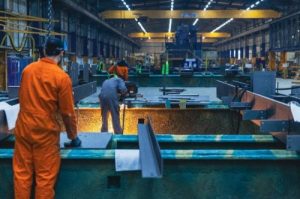Fashion house stumbles on the Chinese catwalk

BURBERRY’S results has taken a hit from the economic slowdown in China, but having re-established itself as a luxury brand, the company is optimistic about its future.
The company returned revenues of £2.51bn for the year to 31 March, slightly down from £2,52bn the year before.
The business said that tight management of discretionary costs saved more than £25m during the year, though pre-tax profits also decreased by nearly £30m to £415.6m for the year.
In November 2015 it was announced that Burberry was planning to develop a new state-of-the-art manufacturing and weaving facility in Leeds’ South Bank, a relocation from current facilities in Cross Hills and Castleford.
The initial investment in bringing UK manufacturing under one roof will be over £50m, with a current completion date of 2019.
Burberry said it “will offer increased capacity for trench coat production, more sustainable and efficient ways of manufacturing and the potential to produce other outerwear categories.”
Analysts at Retail Remedy said the firm had “put all its trench coats in one basket” in its move to China, and was now feeling the effects of the slowdown, closing a net five stores during the year.
Christopher Bailey, chief creative and chief executive officer, commented: “While we expect the challenging environment for the luxury sector to continue in the near term, we are firmly committed to making the changes needed to drive Burberry’s future outperformance, underpinned by strong brand and business fundamentals.
We continue to see significant opportunities ahead of us and have put ambitious plans in place to increase future revenue, enhance productivity and create a more efficient organisation. In addition, the capital allocation framework announced today prioritises the investment needs of the business and regular dividend payments to our shareholders, while balancing capital efficiency and flexibility.”
Paul Thomas, Senior Consultant, Retail Remedy retail consultants said: “The appointment of a commercially savvy number two is now imperative to deliver against the ambitious plans laid out in the prelim statement.
“Creating new demand has to be at the core of Burberry’s future strategy. Burberry has re-established itself as a desirable luxury brand. It cannot afford to let this slip by producing sub brands or overselling.
“With trade slowing in Europe, and fluctuations in the US markets, China is not the only problem Burberry has. This could be a defining year for Burberry and for Bailey.”







